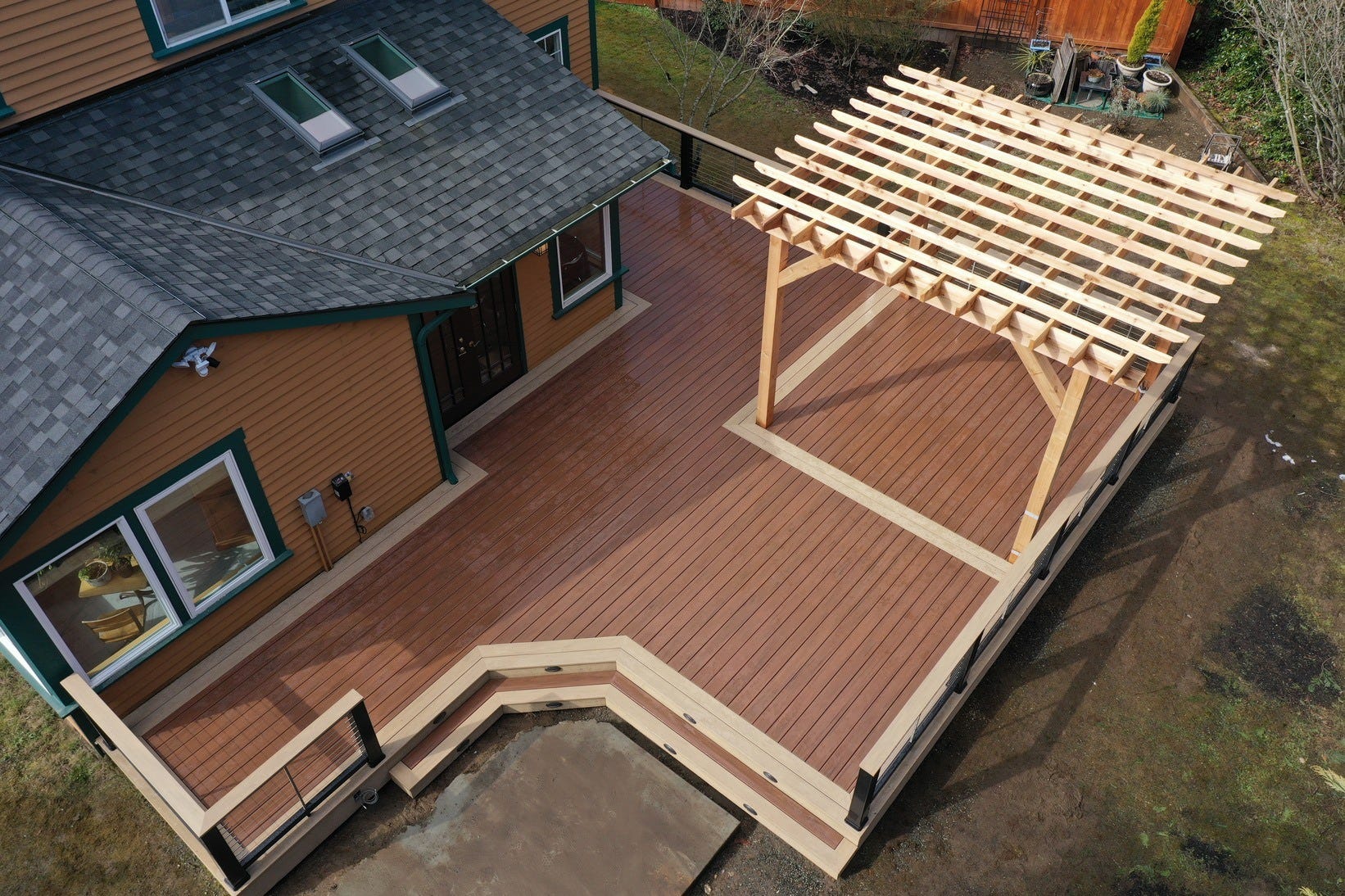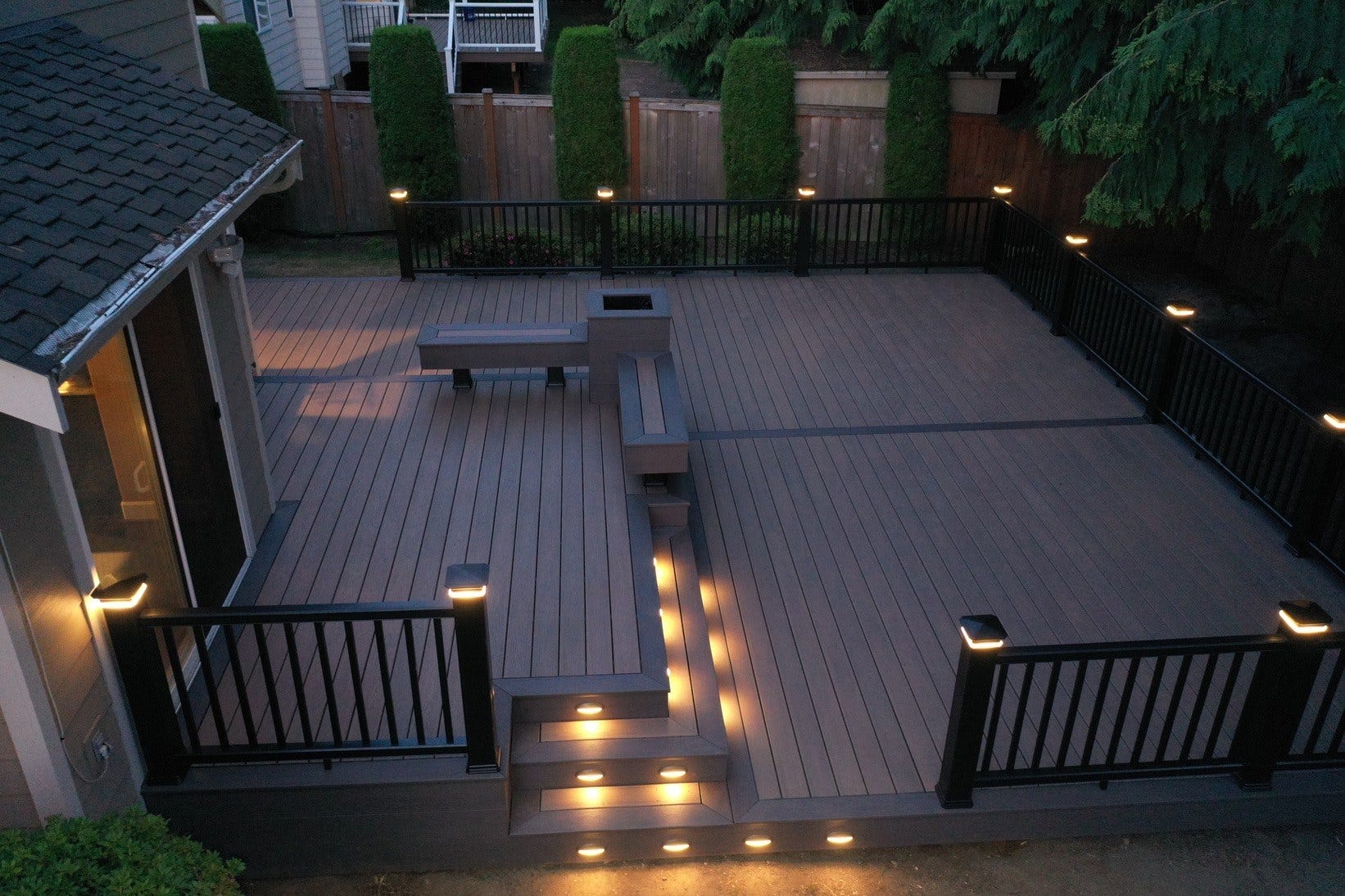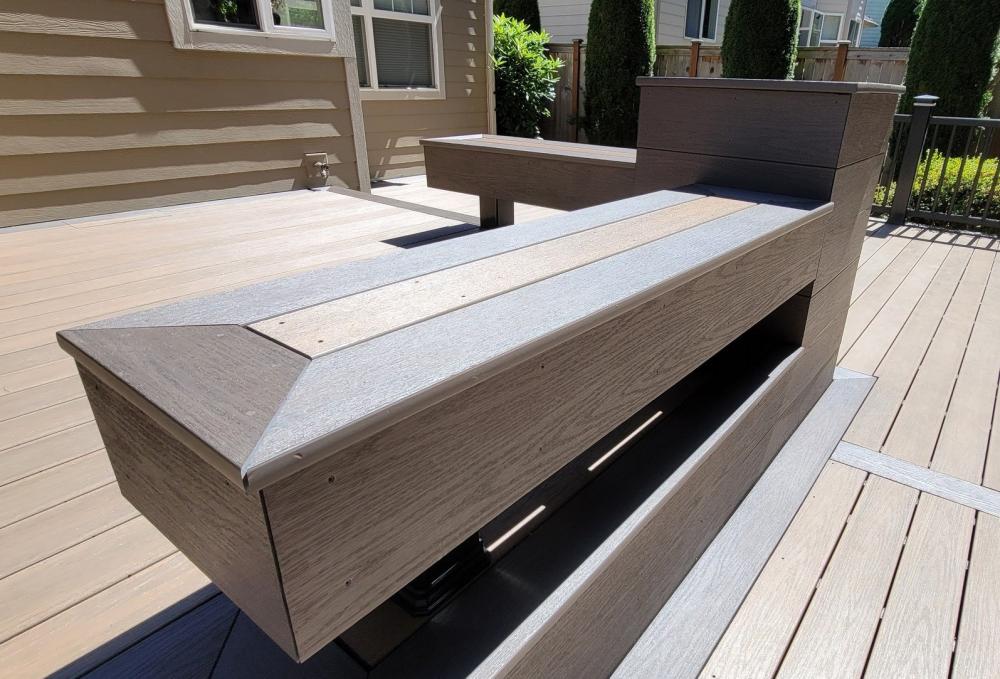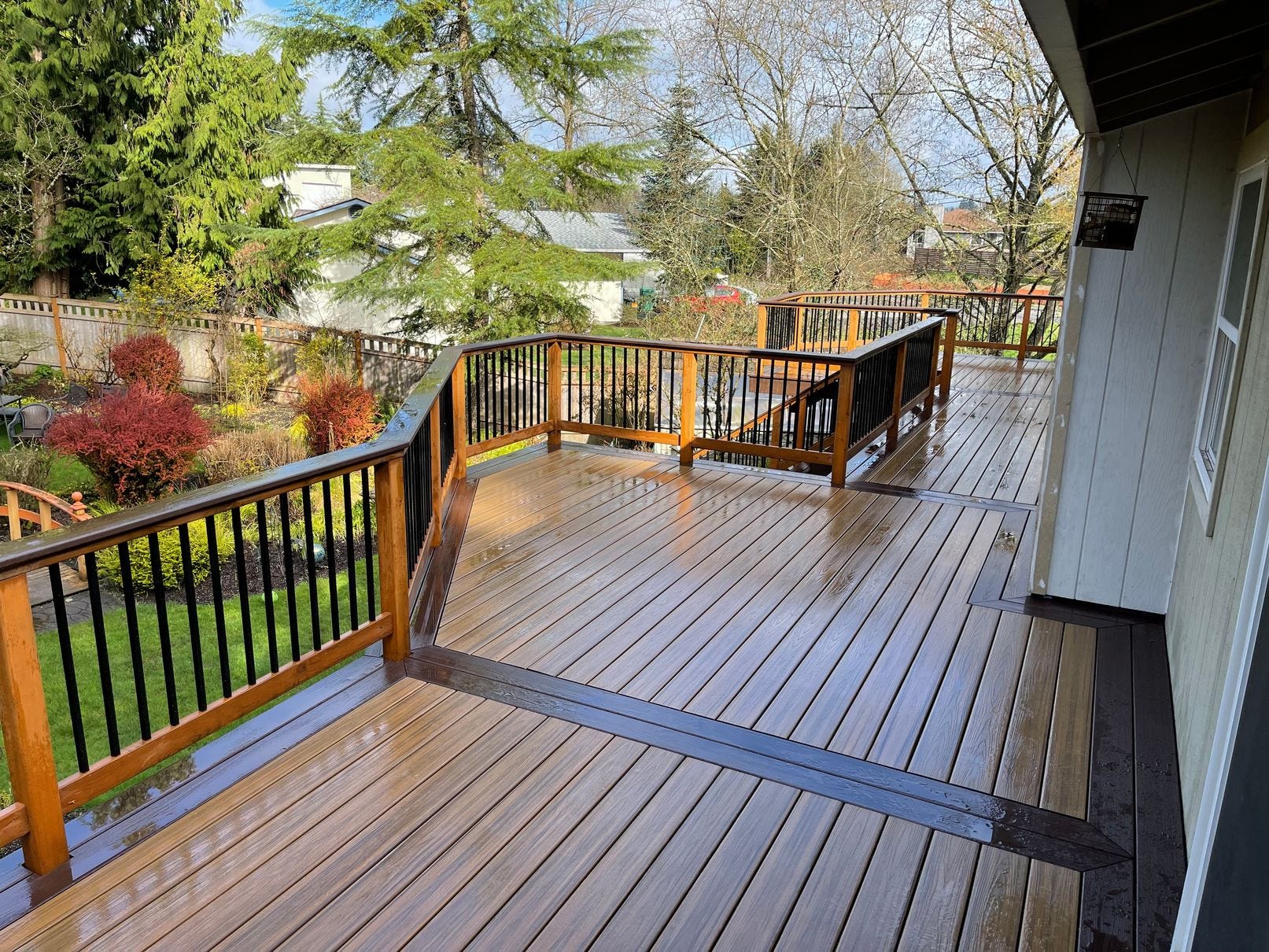

“TJ and his team work year-round to craft thoughtful, high-quality decks that help homeowners make the most of their investment—without stretching their budget.”
From expanding the footprint of your living space to opening your home up to the beautiful outdoors, decks are a game-changing addition to any home. When choosing your design approach, setting your budget, and selecting decking materials, there are many important aspects to keep in mind to ensure the smoothest process. We sat down with a few of Dunn Lumber’s top decking customers—all deck designers and builders in the Seattle area—to learn how they approach deck projects from start to finish.
Today, we’re sharing insights from local deck builder TJ Jensen, owner of RTI Services. Through RTI, TJ and his team have been designing and building custom decks in the Seattle area since 2012. They work year-round to craft thoughtful, high-quality decks that help homeowners make the most of their investment without stretching their budget.
How to maximize the value of your deck
RTI Service’s goal is to build a deck that lasts as long as possible with as little maintenance as possible. That begins with choosing quality materials and using construction techniques that allow homeowners to get the most value from their deck in a way that aligns with their lifestyle.
When it comes to starting a deck project, TJ’s team first asks their clients about their goals for the deck. Understanding how the deck will be used makes all the difference when it comes to function and additional features. “You have to see what the deck looks like and what they’re using it for,” TJ notes, “then recommend ways to make it more user-friendly for them.”


Decking surfaces: composite or PVC?
RTI prefers crafting decks made of manufactured materials, like composite and PVC. Composite decking is made of a blend of wood fiber and plastic, while PVC is all plastic. Both are extremely durable, though PVC offers some distinct advantages.
It’s lighter in weight and easier to handle. When comparing the same color of deck board, PVC will have a slightly cooler surface temperature, making it more comfortable to walk on barefoot in warm weather. Depending on board color and outside temperature, manufactured decking may still be too warm for bare feet (and paws). PVC can also be slightly less slippery when wet—an important benefit for those of us in the Pacific Northwest. PVC warranties also tend to be longer, with some lasting up to 50 years.
“If I was going to live in the house for at least 20 more years,” TJ says, “then I would definitely want composite at minimum for the decking—and I would want aluminum or composite railings. These products require very little maintenance and last a really long time.”
For those looking for a truly unique deck design, PVC is an excellent option for its malleability. With a process called heat bending, TJ’s team can reshape PVC boards to create curved deck edges. “You lay heated blankets and insulation on your deck boards to create a little oven,” TJ says. “Once they hit a certain temperature, you pull the boards out with heat-protecting gloves, and it’s like a wet noodle—you could tie a board into a knot if you wanted.” As the board cools, it hardens into its new shape, creating a smooth, round edge that adds an unexpected softness to a typically angular deck design.


Utilizing efficient design to lower costs
A new deck project is a major upgrade for any home, but it isn’t always the most financially accessible. That said, you can still achieve a beautiful, functional space without a huge budget. “Our goal is to give our clients the best deck they can get for the most reasonable price,” TJ explains. “So we like to simplify the design by not including too many diagonal corners. They add cost and labor to the job.” Instead, TJ’s team recommends squared-off corners, which are not only easier to install, but also reduce the number of border and railing components needed.
Similarly, while multi-tier decks, with steps leading up or down to other deck levels, are a popular design choice, they come at a cost. “Multi-tier decks add a lot of extra labor and complexity to a project, and they reduce your usable square footage,” TJ says. “We recommend bringing everything onto the same level so you have more space to enjoy.”
Once materials are selected, RTI uses 3D modeling to render the framing, fascia, decking, and railings, allowing them to showcase the design from multiple angles. While there are plenty of opportunities for customization, they maintain a few consistent practices across all their builds.
“We always include joist tape with all of our framing,” he says, “and we also always do stair riser boards.” Joist tape acts as a waterproof barrier that seals joists, beams, and ledger boards from moisture—while stair riser boards enhance both aesthetics and structure by filling the space between steps with vertical panels.
With these strategies in mind, TJ and his team help clients maximize their budget while still achieving an elevated outdoor living experience.
Thoughtful deck customization opportunities
Building custom decks for a wide variety of homes gives RTI the opportunity to get creative with customization. “When it comes to customization, we’ve done a lot of benches that almost function as a railing system,” he explains. “When a deck isn’t high enough off the ground to require a railing, we’ll line the edges of the deck with benches.” These bench borders are made with the same fascia boards used on the deck and include picture-frame detailing to maximize both seating and visual appeal. TJ and his team also incorporate pergolas, trellises, roof covers, planters, and lighting into his builds, depending on the customer’s needs.
For TJ, the final product is only part of what makes his work fulfilling. “I really love meeting new clients and communicating with them throughout the process,” he emphasizes. “It’s amazing to know they love working with us so much that they often cite us by name.” His team’s dedication to craftsmanship and building relationships is clear in every project. “I’m so proud of how happy our customers are, and we’re proud to provide them with something they love using.”
We hope you’ve found this interview helpful! At Dunn Lumber, we make it easy to access trusted advice, products you can count on, and the knowledge you need to make your project a success. Stop by any one of our nine Seattle area showrooms to set foot on our display decking options, or check out more decking articles on our blog, like Resurfacing vs. Rebuilding Decks. Stay tuned for our next decking specialist interview!





